Acoustic Revive RHR-21 Acoustic Resolution Exciter by Clement Perry
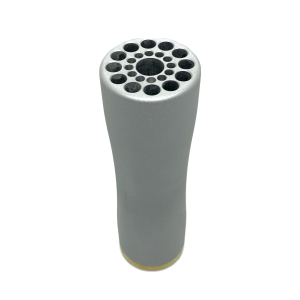
 Fine-tuning one’s listening room is an art in and of itself and among my greatest passions. I’ve been fine-tuning my room for nearly three decades. Using the third-floor attic of my brick home, I’ve had some exciting results that ranged from stellar to terrible. Of all the room-tuning products I’ve tried over the years, Acoustic Revive is one from which I’ve come to expect the best results.
Fine-tuning one’s listening room is an art in and of itself and among my greatest passions. I’ve been fine-tuning my room for nearly three decades. Using the third-floor attic of my brick home, I’ve had some exciting results that ranged from stellar to terrible. Of all the room-tuning products I’ve tried over the years, Acoustic Revive is one from which I’ve come to expect the best results.

So much so that in 2009, I visited the beautiful city of Tokyo, Japan, home to Acoustic Revive president Ken Ishiguro. During a series of factory tours throughout Tokyo over seven days, I realized how vast and sophisticated the Acoustic Revive brand is. Today, my listening room uses Acoustic Revive’s RWL-3 Room Tuning Panels. The RWL-3’s handsome styling, curved exterior, and specially designed internal (silk) fabrics made my space more attractive while improving image stability, focus, overall balance, and vibrancy. What I discovered about the RWL-3 while watching them being assembled is they’re not absorption devices. They’re designed to diffuse reflections, which helps keep my room from sounding dead. What the RWL-3s do is help eliminate unwanted standing waves, reflections, and boom. Sound absorption devices can potentially harm rather than help when not applied appropriately.
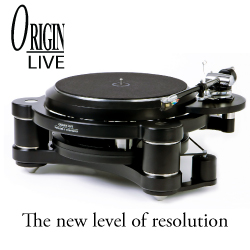 Moreover, I’ve had excellent results with other AR products, namely their REM-8 EMF canceller, RGC-24 Ground Conditioner, and RR-888 Ultra-Low-Frequency Pulse Generator.
Moreover, I’ve had excellent results with other AR products, namely their REM-8 EMF canceller, RGC-24 Ground Conditioner, and RR-888 Ultra-Low-Frequency Pulse Generator.
When I noticed AR had released a brand-new accessory in the Acoustic Revive RHR-21 Acoustic Resolution Exciter, my first thought was to find out how this product worked. After reading this on their website, I realized that the RHR-1 is small. However, thanks to its special structure, which is the subject of a utility model patent, it achieves a standing wave elimination effect that far exceeds that of large room tuning products for the listening room. Simply place it in the corner of a room, near a speaker, behind an audio rack, or anywhere standing waves tend to accumulate, and it will eliminate standing waves, providing clear, high-quality sound. Of course, after living with the Argent Room Lens for over 25 years, I still find them to provide a unique but excellent frequency balance, mainly when using an enormously large loudspeaker such as the Sunny Majestic Horn loudspeakers. The Sunny Majestics have proven to be way too large for my 21′ by 17′ listening room, but having these pipe organ look-alikes has provided startling results with regards to taming early room reflections and low-frequency boom and allowing the Sunny Majestics to perform way beyond my expectations. That being said, you might have guessed my expression when I read the introduction to the RHR-21s.
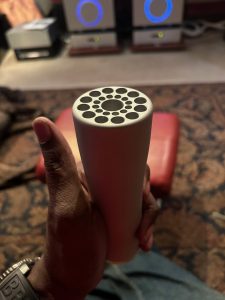
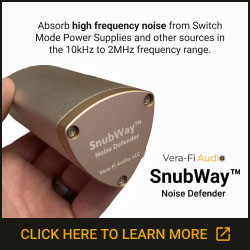 Feeling intrigued, I contacted the AR inside man, Hontani-San. I inquired about the possibility of a review (instead of creating preconceived notions and false assumptions based on their look). Within a few weeks, a special parcel that said Acoustic Revive on the box arrived via Japan. Once again, just the size and overall weight of the package had me shaking my head upon first blush. Standing just 6 ½” inches tall and about 2″ thick, I thought, “Where’s the power cord?” I found it hard to believe that the RHR-21s were passive devices. I admit that at nearly 2 lbs. each, the RHR-21s offer a substantial feel in their smooth aluminum housing. What’s more interesting is the series of small circular holes located on the top that is said to provide most of the RHR-21 magic. The accompanying instructions show a variety of setup scenarios for which to place these in your room.
Feeling intrigued, I contacted the AR inside man, Hontani-San. I inquired about the possibility of a review (instead of creating preconceived notions and false assumptions based on their look). Within a few weeks, a special parcel that said Acoustic Revive on the box arrived via Japan. Once again, just the size and overall weight of the package had me shaking my head upon first blush. Standing just 6 ½” inches tall and about 2″ thick, I thought, “Where’s the power cord?” I found it hard to believe that the RHR-21s were passive devices. I admit that at nearly 2 lbs. each, the RHR-21s offer a substantial feel in their smooth aluminum housing. What’s more interesting is the series of small circular holes located on the top that is said to provide most of the RHR-21 magic. The accompanying instructions show a variety of setup scenarios for which to place these in your room.
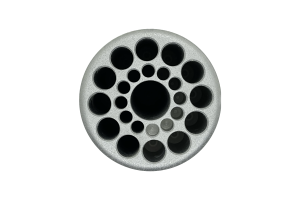
 Looking closely at the 24 holes (12 larger outer rings and 12 smaller inner rings), I noticed that each varies in depth. They appear to go from shallow to deep in a circular order. I wonder why they’re staggered that way and didn’t bother to ask (however, I am reminded that the Argent Room Lens are also unevenly spaced to each other and the number of treatment materials placed inside each tube. Without reading into this too much, I want to hear what the RHR-21s could do in my own listening space. The installation guide allows for various placement positions, such as behind my loudspeakers, in front, in the back corner of my room, or the front. The guide also shows placing the center on the front wall or nearer the center of my room as an option as well. Finding the most suitable position for my room will require experimentation for the best results.
Looking closely at the 24 holes (12 larger outer rings and 12 smaller inner rings), I noticed that each varies in depth. They appear to go from shallow to deep in a circular order. I wonder why they’re staggered that way and didn’t bother to ask (however, I am reminded that the Argent Room Lens are also unevenly spaced to each other and the number of treatment materials placed inside each tube. Without reading into this too much, I want to hear what the RHR-21s could do in my own listening space. The installation guide allows for various placement positions, such as behind my loudspeakers, in front, in the back corner of my room, or the front. The guide also shows placing the center on the front wall or nearer the center of my room as an option as well. Finding the most suitable position for my room will require experimentation for the best results.
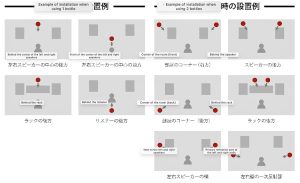
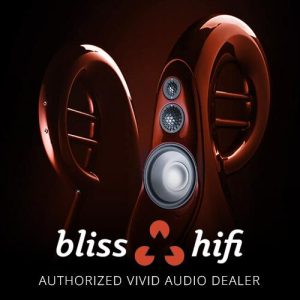 Following the guide, I started with the RHR-21s behind my loudspeakers in the corners of my room. I do have some acoustic ASC Bass Buster panels there, so my results proved uneventful. I then placed a single RHR-21 dead center near the front wall and heard nothing I could report. After that, I placed the pair directly in front of my loudspeakers on their outer edges. I didn’t notice anything and started to feel disappointed that this newest tweak could not produce the results I hoped for in my heavily tweaked-out room. Some might ask yourself, “Why didn’t you remove the Argent Room Lenses?” Because this tweak is perhaps the oldest I have, removing it would so radically change the sound of my room that I wouldn’t recognize what anything was doing, good or bad. Sometimes, it’s best to leave everything as they are.
Following the guide, I started with the RHR-21s behind my loudspeakers in the corners of my room. I do have some acoustic ASC Bass Buster panels there, so my results proved uneventful. I then placed a single RHR-21 dead center near the front wall and heard nothing I could report. After that, I placed the pair directly in front of my loudspeakers on their outer edges. I didn’t notice anything and started to feel disappointed that this newest tweak could not produce the results I hoped for in my heavily tweaked-out room. Some might ask yourself, “Why didn’t you remove the Argent Room Lenses?” Because this tweak is perhaps the oldest I have, removing it would so radically change the sound of my room that I wouldn’t recognize what anything was doing, good or bad. Sometimes, it’s best to leave everything as they are.
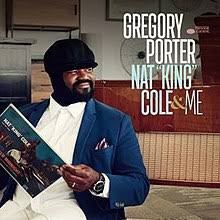 I looked at the guide again for more positions and discovered one more that allowed me to move the pair of RHR-21s further in front of my loudspeakers about dead center. Surprisingly, using Gregory Porter’s When Love was King from his “Nat King Cole and Me” CD, I sensed a shift in Gregory’s deep baritone voice, and the overall weight of this musically rich track became lighter and airier. Shocked, I removed the RHR-21s immediately from that position on the floor, tuned Gregory Porter back up, and lo and behold, the sound changed back to a heavier and less airy performance. Gregory’s voice got thicker, and they lost something. I wasn’t sure what, but I knew something was different. So, I returned the RHR-21s and listened again, and without question, the sound of Gregory’s voice shifted from heavy and robust to a more airier presentation. Gregory sounded as though he had stepped away from the microphone. I could hear a better perspective of his distance, not just from the microphone but also from the orchestra. Weird.
I looked at the guide again for more positions and discovered one more that allowed me to move the pair of RHR-21s further in front of my loudspeakers about dead center. Surprisingly, using Gregory Porter’s When Love was King from his “Nat King Cole and Me” CD, I sensed a shift in Gregory’s deep baritone voice, and the overall weight of this musically rich track became lighter and airier. Shocked, I removed the RHR-21s immediately from that position on the floor, tuned Gregory Porter back up, and lo and behold, the sound changed back to a heavier and less airy performance. Gregory’s voice got thicker, and they lost something. I wasn’t sure what, but I knew something was different. So, I returned the RHR-21s and listened again, and without question, the sound of Gregory’s voice shifted from heavy and robust to a more airier presentation. Gregory sounded as though he had stepped away from the microphone. I could hear a better perspective of his distance, not just from the microphone but also from the orchestra. Weird.
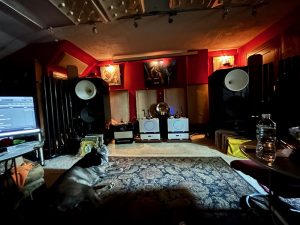
I went through a bevy of recordings, and one after the other, the results were the same: low-frequency smog was lifted from the signal while pitch definition and weight remained. The soundstage appeared a tad wider and with a slightly improved sense of focus. What’s so cool about the RHR-21s is they can be removed instantly for a quick A/B test. These quick A/B’s proved invaluable whenever I looked at these little devices in disbelief. The folks at Acoustic Revive did their homework and ensured these products represented the best of what this company has been offering for nearly two decades.
 As I’ve experienced, results may vary, so patience is a virtue, especially when seeking the best location for the RHR-21s to show their best. I was halfway through the guide’s ten positions when I hit the right location, so I could not state what the other remaining positions could do. However, more experimentation is underway now, and I highly concur with the sonic effectiveness of the Acoustic Revive RHR-21. I have found that the AR RHR-21s are more valuable than I imagined just looking at them. They did as advertised despite their compact size and lifted a veil from the low frequencies that I never knew existed. At $1500 a pop, I find them rather expensive, but when it comes to this beloved hobby of ours, what isn’t? What I can state for a fact is that the Acoustic Revive RHR-21 Resolution Exciters do as advertised and excite this listener.
As I’ve experienced, results may vary, so patience is a virtue, especially when seeking the best location for the RHR-21s to show their best. I was halfway through the guide’s ten positions when I hit the right location, so I could not state what the other remaining positions could do. However, more experimentation is underway now, and I highly concur with the sonic effectiveness of the Acoustic Revive RHR-21. I have found that the AR RHR-21s are more valuable than I imagined just looking at them. They did as advertised despite their compact size and lifted a veil from the low frequencies that I never knew existed. At $1500 a pop, I find them rather expensive, but when it comes to this beloved hobby of ours, what isn’t? What I can state for a fact is that the Acoustic Revive RHR-21 Resolution Exciters do as advertised and excite this listener.


Specifications:
Price: $1499.00 ea
Website: https://acousticrevive.jp/portfolio-item/rhr-21/
USA Distributor https://www.lotusgroupusa.com/acoustic-revive.html
Stereo Times Masthead
Publisher/Founder
Clement Perry
Editor
Dave Thomas
Senior Editors
Frank Alles, Mike Girardi, Russell Lichter, Terry London, Moreno Mitchell, Paul Szabady, Bill Wells, Mike Wright, and Stephen Yan,
Current Contributors
David Abramson, Tim Barrall, Dave Allison, Ron Cook, Lewis Dardick, John Hoffman, Dan Secula, Don Shaulis, Greg Simmons, Eric Teh, Greg Voth, Richard Willie, Ed Van Winkle, Rob Dockery, Richard Doron, and Daveed Turek
Site Management Clement Perry
Ad Designer: Martin Perry


.jpg?KeepThis=true&TB_iframe=true&height=430&width=700)



Be the first to comment on: Acoustic Revive RHR-21 Acoustic Resolution Exciter by Clement Perry